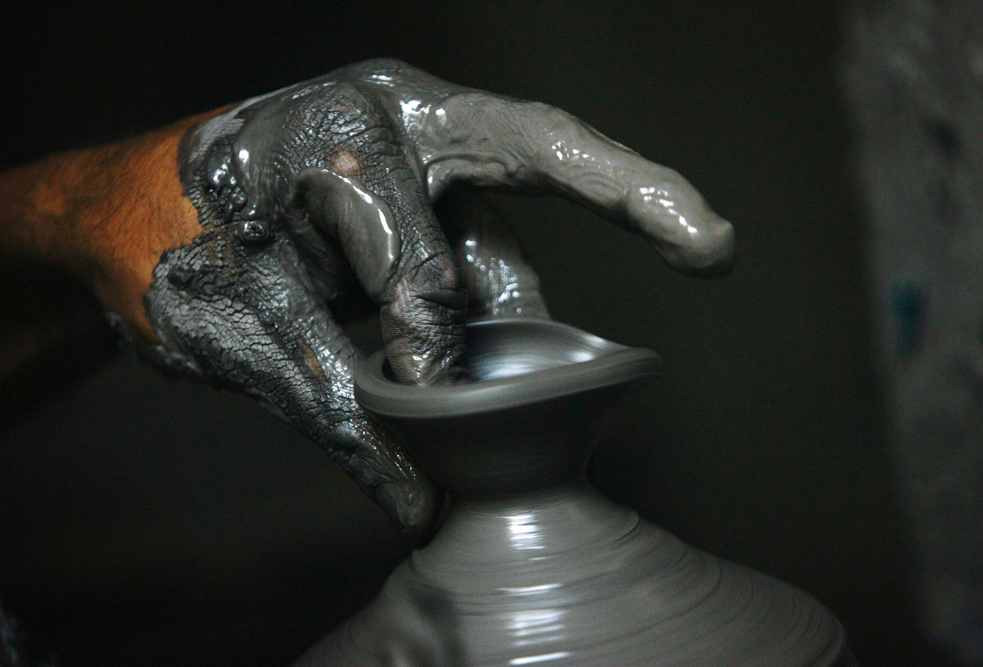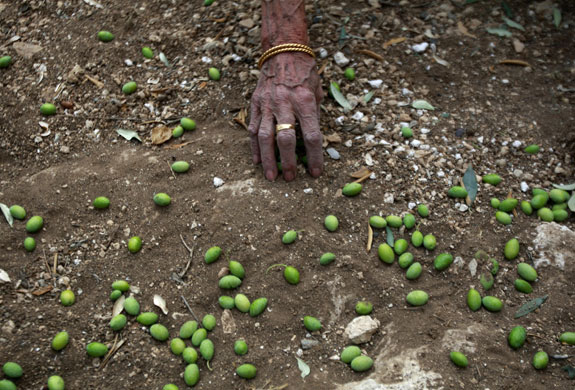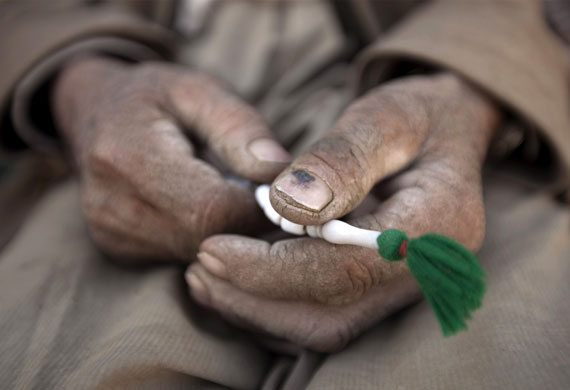In Western culture and particularly in its visual arts there are strong conventions that place peasant life close to nature, in a realm of slow time that is largely impervious to historical change, and limited to the core functions of human subsistence. Obviously, none of this precludes being the subject of a striking artistic image.

This photograph from Mumbai of a potter’s hand working the wet clay is a stunning composition. The odd yet graceful configuration of the hand, the exceptional tonality of the light on the grey mud, the tension between the immobility signified by the drying mud on his hand and the continuous motion of the spinning artifact–these combine to create a richly textured image. It remains an image of a primitive world, however: we see a human body caked in the primal mud from which it came and to which all return; that hand is engaged in artisanal labor to fashion a simple object (a lamp for a religious festival); and it even hints at affinity with the animal kingdom, as the dried clay looks like elephant hide as the extended finger then becomes a prehensile trunk, sensitive but still confined within brute nature.
I hate to reduce a fine photograph to a finger puppet (even if it is there to be seen). And I could have said more–in fact, I have said more in a post on a similar image (see the second photo in the post) in October 2007. As today, that image was taken during preparations for the Hindi festival of lights. (Primitive life is thought to be cyclical but is more than that; journalism is thought to be continuously new but actually is cyclical.) I’m featuring the current photograph because it is one of several images this week (and a steady stream of such images throughout the year) that feature fragmentary images of hands from the third world.

If you showed an image of a poor old woman today and captioned it “crone,” you would rightly catch hell. But this photo is close to that. We see the old woman’s hand scratching across the dirt for the pistachios, as if to furtively grasp her widow’s mite. She might actually be a person of considerable status and wisdom, as the caption merely said that the nuts had been spilled, but the photograph alone presents a social type, not a person. As above, there is a hint of culture (jewelry, like the pottery, is the basic stuff of museum collections), but this is an image of bare life.
Note the same elements predominate in this image:

Again, a rudimentary sign of culture (the prayer beads) serves to emphasize the dirty hands and rough clothing of someone living in a world of manual labor. The worn nail is particularly harsh–like the first hand, some wearing process pushes the viewer back into nature, into a visceral, painful, inevitable mortality. Religion seems an obvious consolation, and so, once again, a person and his society are denominated as essentially simple, pre-modern, and located within conditions and cultures that are changeless.
All three photographs appeared in slide shows at major newspapers this week. None of them were taken with the intention to demean their subjects. Nor do they, by themselves. But surely one cumulative effect is to further consolidate a cultural geography that places some people in a modern world of continuous change while keeping others in a timeless realm where survival for another year is thought to be enough.
This fragmenting vision is wrong, of course, but more than that, it is a morally flawed pattern of denial. Instead of reproducing images that make poverty seem timeless, there is need to recognize that everyone lives in history. Only then can one fully understand how all are connected in a web of obligation, and why continued suffering is a collective failure, not least by those most capable of being agents of change.
Photographs by Arko Datta/Reuters, Ahmad Gharabli/AFP-Getty Images, Ahmad Masood/Reuters.
Discussion